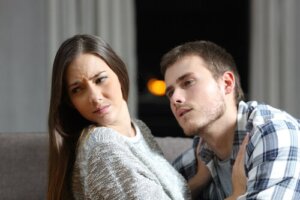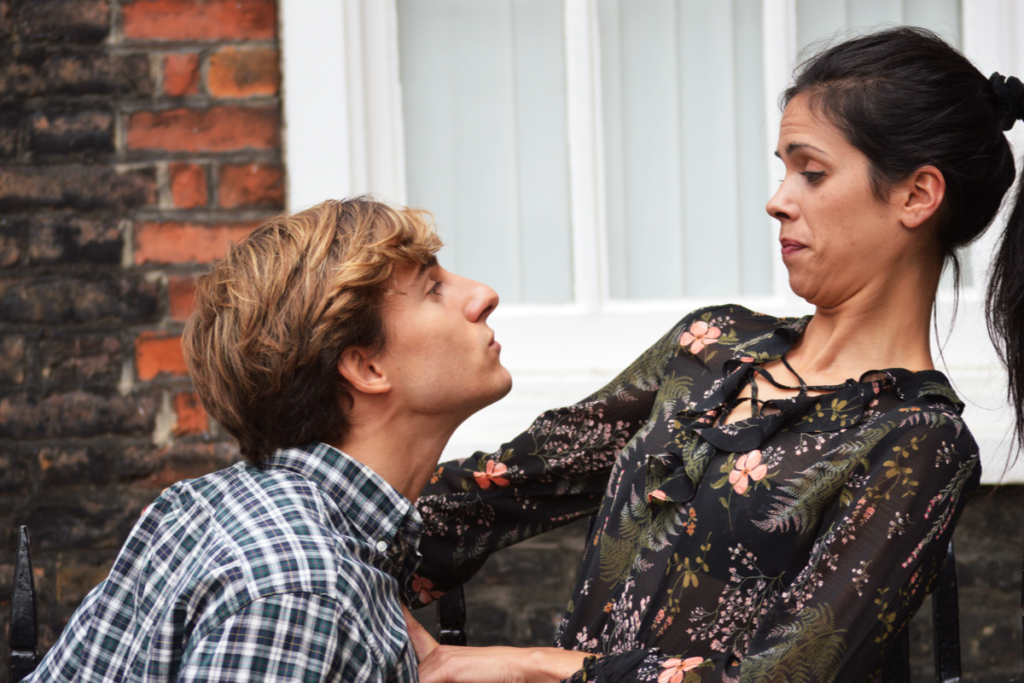Kissing Phobia or Philemaphobia

Philemaphobia is the fear of kisses, kissing, or being kissed. It doesn’t only refer to passionate kisses, which imply a high level of intimacy, for which perhaps many aren’t prepared. It can also be a simple kiss on the cheek, as a greeting, or when meeting someone.
Like all specific phobias, philemaphobia is an anxiety disorder that involves an irrational, disproportionate, and persistent fear, caused by an object or situation; in this case, kisses. Although the fear is recognized by the person as irrational, they’re unable to control it.
To better understand what this phobia consists of, we’ll look at its characteristics, symptoms, and causes, as well as the most effective treatments for overcoming it.
Characteristics of philemaphobia
Philemaphobia goes beyond the simple fear or nervousness that many people may experience when they’re going to kiss or be kissed.
For example, it’s quite common to get anxious when you’re going to kiss a person you like for the first time. However, this doesn’t refer to philemaphobia since the feared object isn’t the kiss itself. In fact, it concerns other aspects such as starting a relationship with that person, being rejected, or discovering that they don’t feel the same way.
On the other hand, in philemaphobia, the feared object is the kiss itself. Therefore, sufferers are afraid to kiss, to be kissed, and even to see other people kissing.
That said, for this fear to be considered an anxiety disorder, the following characteristics must be met:
- The fear experienced before the feared object is disproportionate with respect to the demands of the situation.
- The fear that the person experiences goes beyond their will. This means they can’t manage the sensations of terror and fear that take them over.
- They can’t explain or justify the fear they feel in these situations. In fact, they see no sense in it and understand it’s irrational but can’t help it.
- The fear is so high that it systematically leads them to avoid any situation in which the action of kissing might occur.
- Their fear is maladaptive and causes relational problems.

Symptoms of philemaphobia
Philemaphobia presents the same symptomatology as other specific phobias. Indeed, the only aspect that differentiates it from other kinds is the stimulus that causes it: kisses.
Generally, the most characteristic symptom of any phobia is experiencing high amounts of anxiety when exposed to the feared element. This anxiety can manifest itself in a panic attack or a more general feeling of anxiety. Also, the closer the person is to the feared stimulus, the worse the sensation.
Among the most characteristic anxious manifestations of philemaphobia are the following:
- Physical symptoms. Rapid heart rate, sweating, tremors, shortness of breath, lightheadedness, dizziness, chest tightness, nausea, increased muscle tension, and headaches.
- Psychological symptoms. Intrusive thoughts in which the sufferer considers that kisses are dangerous. For example, they might believe that they transmit disease.
- Behavioral manifestations. Avoidance of the situation due to the feared stimulus.
Related phobias
Most patients with an anxiety disorder have more than one specific phobia. Philemaphobia is usually associated with the following:
Mysophobia
This is an irrational and excessive fear of being contaminated with germs. It leads the sufferer to believe that, by being kissed by another, they might catch a disease. In these cases, they think that there may be germs or bacteria in the saliva that are harmful to their body.
Halitophobia
Philemaphobia can also be related to halitophobia. This consists of an excessive fear of bad breath, both in oneself and in other individuals. Obviously, this can cause an aversion to kissing.
Haphephobia
This is the irrational fear of touch. Sufferers may experience inordinate amounts of anxiety about any kiss, even those on the cheek.
Causes of philemaphobia
There are various psychological theories that explain the origin of specific phobias. In fact, there can be many factors that trigger them :
Conditioning
Cognitive-behavioral theories explain the origin of phobias by classical conditioning. It suggests that a previously neutral stimulus (such as kissing) can be associated with aversive stimuli, to the point of fearing them completely.
According to this perspective, fear is maintained due to avoidance behavior.
Beliefs and educational styles
Religious or cultural beliefs have also been proposed as playing a role in the development of philemaphobia. Thus, educational styles and early experiences could be determining factors in the development of this type of fear.
Traumas
The experience of sexual trauma (such as suffering a sexual assault) could be another factor that explains the origin of philemaphobia.
It’s presumed that the cause of this psychological alteration is multifactorial. In other words, it contains educational aspects, learning, beliefs, early experiences, and personality traits.

Treatments for philemaphobia
Fortunately, phobias can be overcome. The most effective treatment is psychological therapy. The therapy that’s proven to be most effective in overcoming phobias is cognitive-behavioral therapy. This addresses the distorted thoughts and maladaptive behaviors that frighten the patient, offering them the necessary tools to respond to each crisis in the best possible way.
Cognitive therapy based on mindfulness has also been shown to be effective in the treatment of anxiety disorders. Finally, in severe cases, the administration of anxiolytic drugs is recommended. However, they should always be combined with psychotherapy.
All cited sources were thoroughly reviewed by our team to ensure their quality, reliability, currency, and validity. The bibliography of this article was considered reliable and of academic or scientific accuracy.
- American Psychiatric Association (2014). Manual diagnóstico y estadístico de los trastornos mentales. 5ª Edición. Editorial Medica y Panamericana.
- Capafons, J. (2001). Tratamientos psicológicos eficaces para las fobias específicas. Psicothema, 2001; 13(3): 447-452. Disponible en: http://www.psicothema.com/psicothema.asp?id=467
This text is provided for informational purposes only and does not replace consultation with a professional. If in doubt, consult your specialist.








